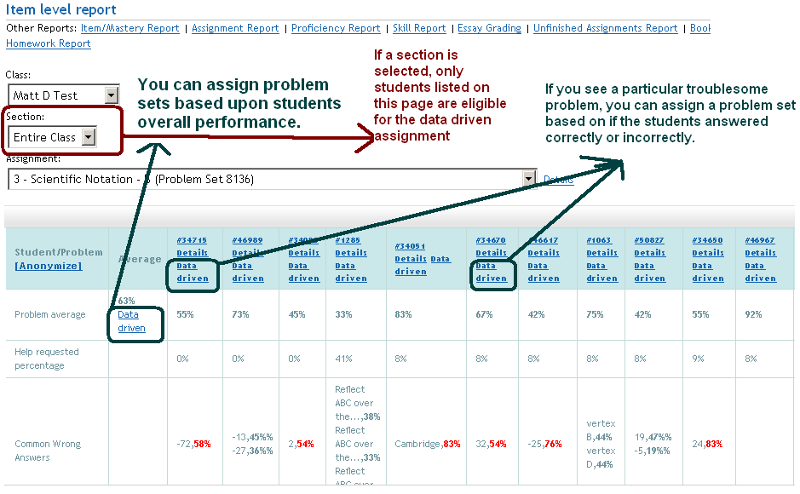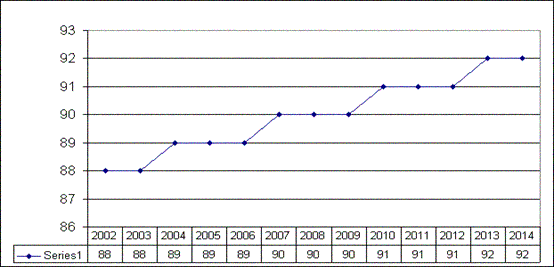NAESP offers a new process for school improvement
The steps to school improvement are now eased by using the successful improvement initiative that has been employed by CEI, NAESP's new partner.
The process uses three phases that begin with interviews, observation, and focus groups. In addition, the assistants have other evaluation tools at their disposal, including Root Cause Analysis and Developing Action Research Plans as developed by Drs. Scott Bauer and David Brazer from George Mason University and Focused Improving Planning (FIP), a method developed by John Simmons and the Strategic Learning Initiative that empowers both administrators and teachers.
Once a school profile is developed, support and training is provided. This may range from classroom management to staff evaluation to Common Core standards, RTI, technology, STEM and individuation.
CEI and NAESP work with more than 1400 trained and certified mentors and school improvement experts, so we have a pool of experts available to respond to a school's needs.
An additional tool used during the second phase instructs teachers in using ASSISTments, a free online platform that makes data-driven instruction an easy and natural part of planning and teaching. These trainings can happen in person or often remotely.
The third phase involves reports and evaluations that summarize the impacts - locally and beyond - and provide recommendations for further steps toward additional improvement. Read more at: www.edimprovement.org/ improvement-initiatives/
Principals and administrators are invited to contact Dr. Christine Mason with any questions about the three phase program. cmason@naesp.org
Professional Development
Services
In addition to the process described above, CEI sponsors dozens of training modules on a wide range of categories: Common Core, Intervention Methods, Leadership, Learning Strategies, Planning for Improvement, School Culture, Tools for Teaching.
Sessions range from one hour to two days, and several of them can be arranged for remote delivery.
Following is a sample description of one session taught by Dr. Kathleen Sciarappa. It has a one-day or two-day option. For descriptions on the other modules, please go to www.edimprovement.org/ training-modules/ and select a category.
Courageous Leadership for Aspiring Leaders: Are You Ready?
Teacher leaders of today hold the most promise for improving our schools in this decade. This session explores the impact of expanding the sphere of influence. Not sure you're ready for the leap? Come and discuss the power, passion and potential of the principalship.
We'll examine key research regarding the quality of successful school leaders and assess why principals succeed or fail. We'll consider factors, including current leadership experiences that can indicate if you're ready to move into larger positions, and discover how to be supported as you make this important transition from assistant to principal or from teacher leader in the classroom to school leader and key person in the school, community, state and beyond. Activities will include creating an action plan.
Key Points
- There are specific ways that five years in a position of leadership has a large impact on school reform.
- Mentor relationships and collegial associations provide professional and personal benefits.
- Missteps can be corrected; early behaviors help assure long-term success. There are ways to "practice" leadership prior to assuming a principalship.
|
We hope you are enjoying our New! Website
www.edimprovement.org
View our blog, and see bios for our team, feeds from relevant sites, announcements of upcoming events, and descriptions of our services. Thanks to
Monica Jerbi, our Web Content Specialist.
CEI remains committed to providing high-quality research based services, to questioning current strategies, and contemplating the future of education, nationally and globally.
|
|
For more information on our services and modules contact Honor Fede (hfede@naesp.org)
To help us meet your needs, please send an email with answers to the following questions:
1. Primary concern or need: 2. Proposed dates of service:
3. # of teachers:____
4. What you expect from CEI:
|
|
Editor:
Carolyn Lieberg, M.A. |
|
Contact Information
To be removed from this email list please send an email with the header
|
|
|
Dear Educator,
The National Association of Elementary School Principals and its research center, the Center for Educational Improvement (CEI), are pleased to provide you with the first NAESP edition of WOW! Ed. WOW! Ed is a monthly topical theme-based newsletter available to NAESP members and others as a free subscription service.
The focus of the July issue of WOW! is School Improvement and Data Driven Instruction. In this edition we highlight the School Improvement services of CEI (see announcement to the left) and describe one of the data based approaches used by CEI. The approach, ASSISTments, is designed as a system for providing teachers with instaneous feedback regarding student performance --thereby providing an invaluable platform for immediate differentiation of instruction.
When David Barnes from the National Council of Teachers of Mathematics and I visited Dr. Neil Heffernan, Christina Heffernan, and their ASSISTments team in June, we learned about the "behind the scenes" efforts that are going into building ASSISTments as a tool to revolutionize education. During that visit we saw how ASSISTments is being integrated into a local middle school - a teacher at a time. Math and English teachers were excited about the knowledge they gain from the immediate analysis that the ASSISTments "frame" provides. The principal of that school, Richard Lind, is moving ahead with further implementations of the ASSISTments approach and is looking forward to increasing the capacity of other teachers in his school through the data tracking and feedback that ASSISTments provides.
School Improvement and expectations for Annual Yearly Progress in individual states are currently being altered by state waivers. The impact of these waivers will be tracked this year as individual states begin to implement their waivers. In light of the Common Core State Standards and expectations for college and career readiness skills, these waivers may provide some much needed and welcome relief to schools and districts as they strive to prepare for some of the most pervasive educational changes in recent history. However, states are taking a very individualistic approach to this, and while replacing expected AYP scores with expectations for value added student growth may be useful to many schools, these new approaches are not without flaws or critics. And how they are implemented varies from state to state. All in all, with these changes, school leaders are advised in 2012-2013 to stay in close communication with their states, districts, and each other. This will allow us to pool our knowledge and resources. These initial articles serve as a springboard for further insights from NAESP in the coming months.
|
 | Data Driven Instruction | |
By Suzan Mullane
The 21st century is the age of shared information. Effectively managing and prioritizing data maximizes efficiency and mitigates potential problems. From high finance, space exploration, medicine, or forensic physiology, data drives objective decision-making in virtually every successful industry. The classroom is no exception. If there is a science and art to the teaching process, then effectively utilizing student data is the metaphoric paintbrush that awakens the canvas. Student data offers the clues on what is working for kids and what is not. These data provide a non-subjective tipping point- the keys to accelerate or remediate lessons to modulate student success.
Tools for Data Driven Instruction
Data driven instruction is not a new concept. Teachers have been using data from tests, pop quizzes, writing assignments and informal behavioral observations to revamp instruction for as long as there have been classrooms, (Cuban, 2011). Effectively utilizing student data however can be a challenge, particularly given the transition to Common Core and limited school funds for tech-based teacher utilities. Fortunately, free time saving data-driven technology tools are available thanks to Worchester Poly Tech, the National Science Foundation, Educause, and the US Department of Education.

ASSISTments, a web based platform for differentiated instruction that functions as a tutorial while students are formatively assessed. Teachers can write or select questions in any subject and receive reports to qualify how students are doing, thereby having the data to modify for some ASSISTments and accelerate for others. Endorsed by the NAESP, ASSISTments is also a cognitively based diagnostic system that tracks math skills in grades 4-10, found within the Common Core State Standards. ASSISTment includes: "Scaffolding, at the question level, Data Driven Actions, at the teachers level, and ARRS, Automatic Reassessment and Relearning System. In other words, "the computer is in charge of spacing practice over time,"
http://teacherwiki.assistment.org/wiki/Data_Driven_Instructions. ASSISTments provides:
- Data for how long it takes each student to complete an assignment
- A parent portal for communication
- Percent of students who asked for assistance
- A data-driven button on students who need remediation or enrichment with a click
- Error analysis patterns
- Skill building sets for immediate remediation based on outcome data
- Individualized assignments to reach mastery
Parents will appreciate features to review homework assignments, completion rates and accuracy. Worthwhile parent engagement through timely information is truly noteworthy.

Here are a few comments from the thousands of teachers who have found it helpful in support of their math instruction:
"ASSISTments is allowing me to have literally 3 strands of math in one class (Honors Algebra I, Algebra I and the 2nd half of Algebra I). I would NEVER be able to do this without ASSISTments!"
- Andrea Harvey, 9th Grade teacher, Maine
"My students are doing homework on ASSISTments every night now, beginning each class viewing reports, and working on problems from the reports. This routine is driving my instruction. I wonder, 'HOW did I do this before? Did I just hope I was on target?'"
- Barbara Delaney, teacher, Bellingham, MA
"We did the COOLEST thing today with ASSISTments. We had a school-wide math challenge and I put questions into ASSISTments. The kids worked in teams on math challenges and had to put their answers into the website. I heard the word 'fun' more than once! So cool!"
- School Math Coordinator, Fairfield, MA
References
Consider "ASSISTment" as a template for data driven instruction, a free teacher utility for differentiation http://teacherwiki.assistment.org/wiki/Data_Driven_Instructions.
|
 |
Waiver Updates | |
By Carolyn Lieberg
Earlier this year, 16 states were granted waivers to allow flexibility in meeting the No Child Left Behind law. In May, eight other states joined those whose applications had been accepted for the waiver, and in July two more states will be exempted from many of the requirements of the law. Applications are pending from 16 states and the District of Columbia. 
The purpose of the waiver is to allow corrective measures to be put in place while the Department of Education and Congress review and reauthorize the law. Both political parties agree that the law has problems, but they do not agree on how to fix it. "A strong, bipartisan reauthorization of the Elementary and Secondary Education Act remains the best path forward in education reform, but as 26 states have now demonstrated, our kids can't wait any longer for Congress to act," Secretary of Education Arne Duncan said in a statement released July 6 (Blankinship, 2012).
In granting the waiver, The DoE called a "time-out" on the 2014 deadline for schools. The department divided the revised goals into college- and career-ready expectations, state and district accountability and student support, and effective teaching and leadership.
Although many of the applicant states were recipients of Race to the Top grants, Duncan says the pool contains "a good mix" of those who received funds and those who did not. Additionally, some but not all of the schools have adopted the Common Core State Standards (Ujifusa, 2012).
According to Kelly Pollitt, NAESP Associate Executive Director of Advocacy, Policy, and Special Projects, "Congress needs to prioritize the reauthorization of the Elementary and Secondary Education Act (ESEA) in a way that removes the punitive sanctions of No Child Left Behind (NCLB), recognizes the essential role of elementary and middle-level principals, and supports principals' professional development. The major education reform initiatives pushed by the Obama administration- Race to the Top and NCLB waivers, coupled with state adoption of Common Core Standards-all contain new policies that principals must now figure out how to implement. And, in absence of Congressional action to reauthorize ESEA, the NCLB waivers are only temporary. In the meantime, principals must grapple with adjusting current policies and instructional practices in their schools without the proper support for building their capacity to do so."
For recommendations from Kelly Pollitt, go to the CEI Web site (http://www.edimprovement.org/policy/).
References
Blankinship, D.G. (2012 July 6) Waivers free Washington, Wisconsin from 'No Child Left Behind' Education. The Seattle Times [The Associated Press]
http://seattletimes.nwsource.com/html/education/2018624383_edwaiver07.html
Ujifusa, A. (2012 May 29) Latest NCLB waiver list heavy
on Race to Top states. Blog: State EdWatch. Education Week |
 | The NCLB waiver and AYP | |
By Carolyn Lieberg
While NCLB has presented various challenges to states and schools, the measure of Adequate Yearly Progress (AYP) may be the most knotty and most frequently criticized element. States that have applied for and received the waiver provided by the Obama administration will be allowed to switch the manner of the assessment. They will move from assessing the incremental scores to instead using the group failure rates from one year to the next and meeting the goal of cutting those rates by half.
Virginia is one state that appreciates the opportunity to step back from the AYP measures. The student subgroups in the NCLB law consist of three racial categories, special needs, economically disadvantages, and English Language Learners. Superintendent of Instruction for Virginia Patricia Wright "called the federal requirements arbitrary and unrealistic" (Cutright, 2012). The two-year waiver allows time to identify schools that overall need priority treatment.
Educators in Alabama are also breathing a sigh of relief over the waiver. The schools "will have two years to catch up while Alabama education officials try to come up with a replacement system" to measure student growth and achievement (Hurley, 2012). Among the complaints about AYP was the manner in which a score in a single category could negatively affect what would have been a passing grade for a school.
According to the Center for Educational Policy, which analyzed the applications, 19 of the 27 states planned to use a combined subgroup for accountability rather than breaking them out. None of the applications indicate that schools will use SES or school choice as a subgroup, as the NCLB law mandated. The applications also revealed that the accountability plans will be more complex, both within and between states, but they will integrate existing accountability methods (Riddle, 2012).

While the NCLB is being re-written, the Race to the Top initiative, which adds goals in science and writing to the reading and math in the original law, is inspiring fresh strategies for instruction and assessment. The fundamental goals of using rigorous standards and assessment, recruiting and retaining effective teachers, turning around chronically low-performing schools, and building data systems to track student achievement and teacher effectiveness are creating helpful responses from companies that create educational products. In addition to ASSISTments (see the article elsewhere in the newsletter), a wide range of methods is being offered by educational publishers.
Cutright, C (2012, July 11) Virginia receives waiver for Adequate Yearly Progress. The Roanoke Times. Roanoke, VA
Hurley, L. (2012, July 7) Alabama schools get special 2-year AYP waiver. WAFF 48 news. Huntsville, AL
Riddle, W. (2012, May 8) Major accountability themes of second-round state applications for NCLB. Washington, DC: Center on Education Policy.

Questions to Consider re: State Waivers
1. How will the waiver impact expectations for student performance in 2012, 2013, 2014, and 2015?
2. Will changes in the expectations lead to changes in the priorities for individual schools?
3. Has your state or district issued guidance regarding changes?
4. Will there be differences in monitoring student achievement, reports back to schools, or systems of teacher or principal rewards/consequences due to the waivers? |
|
|
Staying in Touch
Principals and teacher leaders within individual schools are the lynch-pins for implementing educational reforms. While policies such as waivers will drive change and even offer chances for mid-course corrections, the dedication and hard work of leaders within school buildings is essential at all phases of implementation. Perhaps your school is well along the path to adding more rigor and preparing for the many curriculum changes that are occuring. Perhaps your school is still uncertain about how to proceed and the next steps for improvement. In either case, we learn from our networking with others. NAESP and CEI are gearing up our supports and stand ready to help further our networks. We invite you to share your successes and questions with us and with your peers. We also urge you to stay informed, research innovations such as ASSISTments, and keep data driven instruction in the forefront to help you monitor your progress.
Sincerely,
Christine Mason
Director, Center for Educational Improvement |
|
|